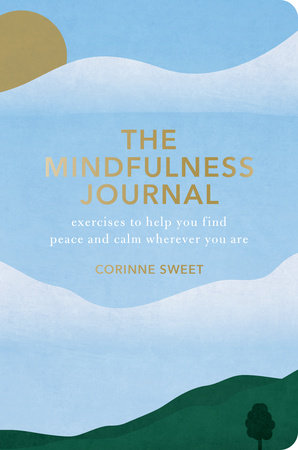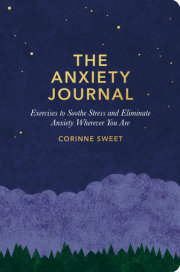What is mindfulness?Take a moment to stop.
Notice your posture.
Be aware of your breathing.
Can you feel your body?
Do you feel any pain or strain anywhere?
Is your mind racing? Or are you calm?
Are you comfortable? Or a bit tense?
Too hot? Cold? Just right?
Are you hungry or thirsty?
What are you actually feeling this second?
Irritable? Happy? Sad? Bored? Relaxed?
This is what mindfulness is about.Mindfulness is about being completely IN THE NOW. It’s about noticing,
this second, how you feel, what you think, what you want, without criticism or judgment.
It’s about learning to notice everything in your body, your mind, and your environment: the gurgles in your stomach, the twitches in your back, the clenching of your jaw, the rain on the window, the clouds in the sky, the purring of your cat, the flowers in the garden, the smile of your child, the sound of a far-off train, the traffic on the street, a bird twittering on a branch, the itch on your nose, the whirr of your computer, or the taste of a melting square of chocolate on your tongue.
Mindfulness is about noticing everything in the moment.It’s about learning to focus your attention in the present.
This very second. This millisecond. NOW.
It’s about living in present time.
Paradox lostThis seems a very simple thing to do. And yet it seems quite difficult to master for many of us.
It takes effort. It takes decision. It takes regular practice.
The paradox is:
something very simple can be quite difficult to do.
But in time, with regular, daily practice, that paradox is lost as you gradually gain the skill.
Mindfully.
Mindfulness is:
* about being present
* a way to focus on now
* a way to calm your thoughts down
* an effective means of relaxing
* a way to release your creativity
* a way to boost physical and emotional health
* a way to gain compassion and empathy
Why be mindful?There is a growing body of evidence—psychological, physiological, scientific—that our 24/7, chaotic, pressurized, stress-filled lives are doing us immense harm.
Many of us are suffering from mental and physical health issues that can be helped significantly by taking the time to slow down and learn, simply, to breathe.
Mindfulness can help you become calmer, more peaceful, and focused.
Mindfulness is not about eliminating stress, as stress is a given in life, but it can help us deal with stress and other challenges more effectively. It has been proven to help relieve stress, anxiety, and depression and can even relieve some of the symptoms of ailments such as chronic fatigue syndrome, eating disorders, cancer, chronic pain, and sleep disorders.
Mindfulness is now recognized by NICE (the National Institute for Health and Care Excellence) in the UK as an effective form of therapy for dealing with physical and psychological stress. As a consequence, GPs, hospitals, parenting organizations, schools, social services, and other government departments are offering mindfulness training and helping people to learn to meditate. Meditation helps slow the mind down and enables it to focus calmly on the here and now, and therefore is the chief, conscious route to achieving a state of mindfulness.
Mindfulness and cognitive therapyIn the East, mindfulness and meditation have been a practice of Buddhism for nearly 3,000 years, and over the past two centuries these ideas have spread to the West. Meditation became associated with the hippy counterculture movement of the 1960s and 1970s, but its benefits later percolated into mainstream society through New Age and other complementary therapies, such as alternative medicine and yoga practices.
In the West, the rise of “talking therapies” in the early twentieth century, such as the psychoanalysis of Freud and Jung, and later the behaviorism of Skinner and Ellis, offered people a way to make sense of their difficulties and pressures. From these two approaches, the humanistic branch of psychotherapy evolved, with therapies such as gestalt, person-centered, and psychosynthesis. This kind of work is usually done with individual therapists or in groups.
A lot of these therapies focus on understanding your past as a way of getting beyond it; in the oft-quoted words of Socrates: “The unexamined life is not worth living.” However, many people now think there is also major value in putting the therapeutic focus on the present, rather than the past, as a way of moving forward effectively.
In the twenty-first century, CBT (Cognitive Behavioral Therapy) has become a popular way of helping people deal with anxiety, depression, stress, and addictions. CBT is often seen as a way of developing a forward-looking mental muscle to deal with everyday issues. It combats negative thinking and supports individual responsibility. It also provides shorter, goal-based solutions, rather than long-term psychotherapeutic “talking therapy.” CBT can be available via referral from your GP and there are private practitioners available for most types of psychotherapy and CBT. These can be very effective, especially as a way of solving an immediate and pressing problem, such as an addiction or obsessive thinking.
The evolving fusion of Eastern and Western practices and therapies led to the creation of Mindfulness-based Cognitive Therapy (MBCT) and Mindfulness-based Stress Reduction (MBSR), which have been proven to be extremely effective in reducing anxiety, depression, addiction, pain, illness, and stress. MBCT is a way of retraining your mind to operate in a different way, drawing on techniques from Buddhism and meditation. MBSR also makes use of yoga techniques. Both of these practices emphasize direct personal experience of specific exercises. These are the exercises you will learn in this book. The more you do the exercises, the more mindful, and relaxed, you will become.
The good news is that you can learn to do this for yourself, from this book, today.
Mindfulness can help you enormously, and practice is totally free.
Why is mindfulness growing in popularity?A key figure in developing this area is Jon Kabat-Zinn, who started a stress-reduction clinic at the University of Massachusetts Medical School in 1979. He was a molecular biologist who gave up his scientific career to bring his experience of Zen meditation and yoga practices to help sick patients.
Kabat-Zinn wanted to see if patients could improve, physically and mentally, as a result of teaching them to meditate. He also wanted to bring mindfulness meditation—the tenet of Buddhist practice—to a wider Western audience.
His book
Full Catastrophe Living describes his pioneering work and the astonishing results he achieved from teaching mindfulness meditation to people with chronic illness, stress, and pain.
What proof is there that it works?There is growing scientific evidence of the effectiveness of mindfulness. Studies around the world have shown that with regular meditation:
* anxiety and depression decrease
* immunity to colds, flu, and other diseases is boosted
* chronic pain, even from cancer, can be reduced
* feelings of “happiness” and “positivity” increase, and regular meditators are more contented than average
* stress and stressors leading to hypertension and heart disease can be relieved
* concentration, memory, and physical stamina are increased
Overall, it is thought that the “positive” effects of mindfulness meditation can lead to a longer and healthier life.
Copyright © 2020 by Corinne Sweet. All rights reserved. No part of this excerpt may be reproduced or reprinted without permission in writing from the publisher.








